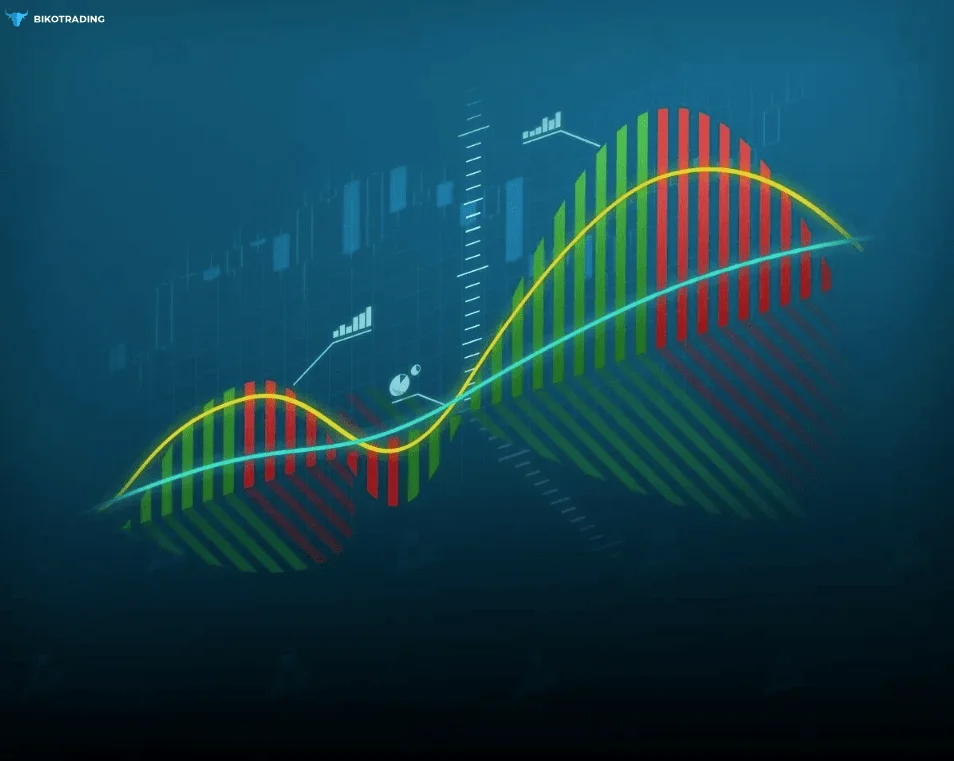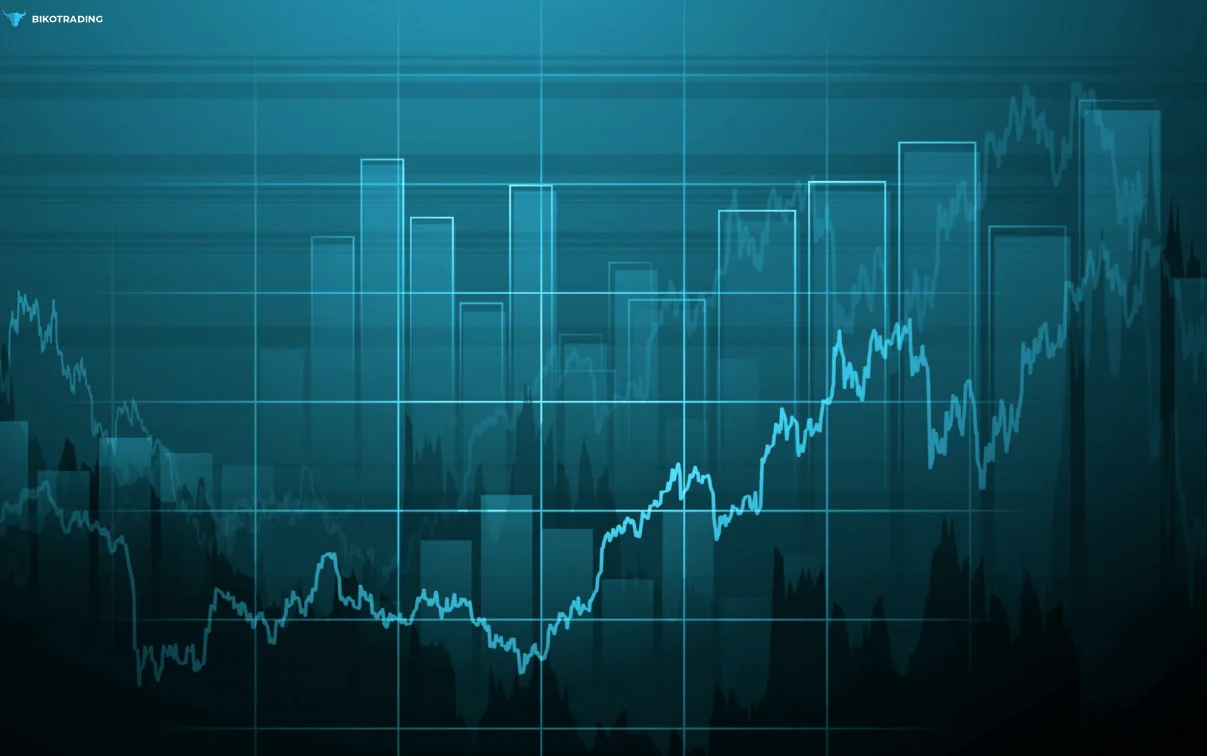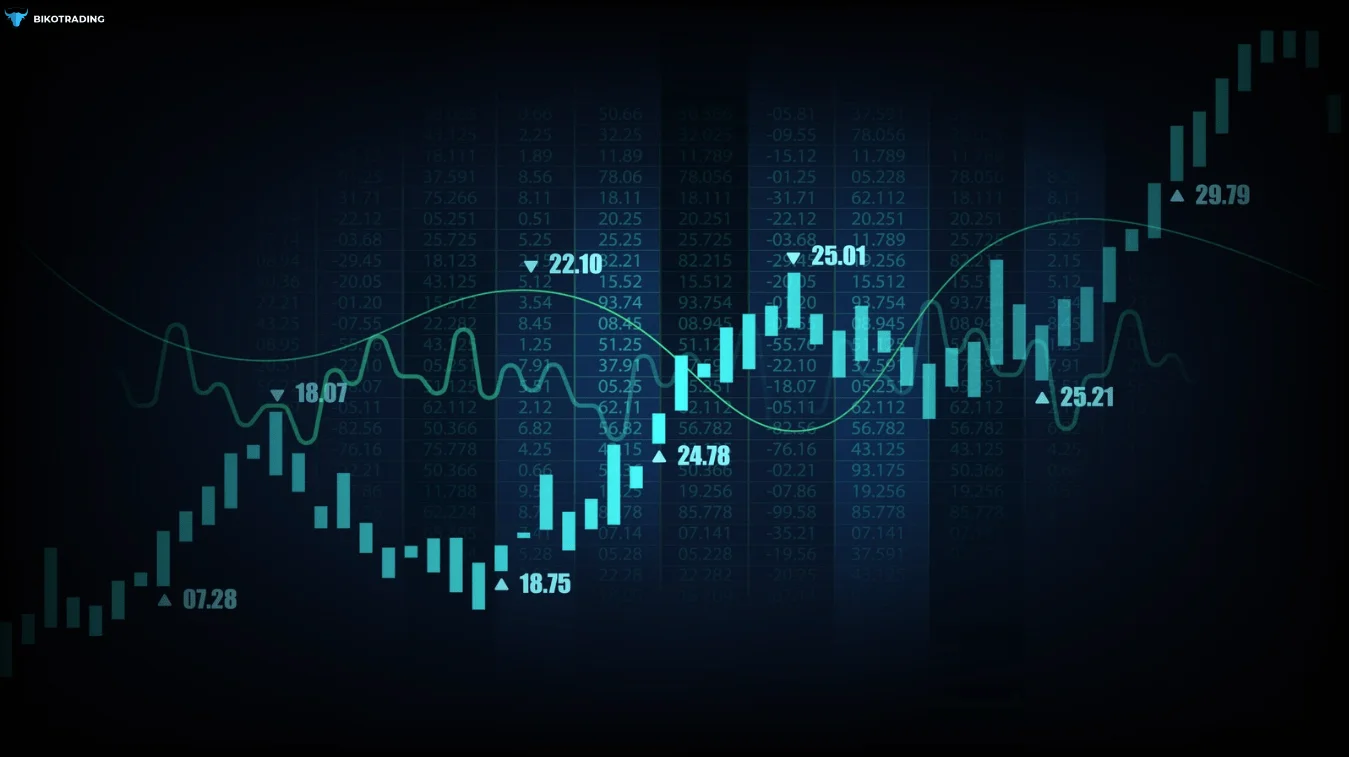Moving Average: How to avoid the illusion of a trend
By Yuriy Bishko October 17, 2024
9+ years of experience in trading and investing in the cryptocurrency market
Co-founder of BikoTrading
Developed personal highly profitable swing and scalping strategies for the cryptocurrency market
Engaged in asset management since 2019
KEY ISSUES:
What is Moving Average?

The moving average is a technical indicator that shows the average value of an asset over a certain period of time (average of moving average). Its purpose is to smooth out price fluctuations and reveal the underlying trend of the token, determining the market direction.
This indicator is used by crypto traders to identify impulses, trends, trading signals, resistance and support levels. One of the advantages of this tool is the ability to create a moving average filter to eliminate market noise. This allows traders to better identify trends and avoid false signals. The meaning of Moving Average is that it filters out short-term price fluctuations, helping traders focus on the overall trend. This prevents hasty actions based on small market changes that can be misleading.
The essence of moving average smoothing is to reduce the impact of short-term fluctuations and highlight the main trends.

There are several types of moving averages in trading, each of which has its own advantages.
SMA (Simple Moving Average) gives all data points equal weight (old and new), one of the simplest and most common types. It helps to identify resistance and support levels, as well as trends. Unlike fast moving averages, it is less susceptible to sudden changes. At the same time, it reacts rather slowly to new changes. To define moving average follow the formula:
SMA moving average formula = (sum of closing prices for 'n' days) / n, where 'n' is the number of time periods in the SMA.
That is, the indicator is calculated as the ratio of the sum of closing prices for a period of time to the number of time periods. If the price is above the SMA, it may signal an uptrend, and if it is below it, a downtrend.
The EMA (Exponential Moving Average) reacts to price changes faster and considers the latest prices more important. At the same time, it can give more false signals during volatile market periods.
This formula uses a smoothing factor that exponentially reduces the weight of each older data point. The EMA calculation applies a smoothing factor (K = 2/(N+1), where N is the number of periods in the moving average) that exponentially reduces the weight of each older data point. The formula is as follows: EMA = Price (t) x k + EMA (y) x (1-k).
To change the speed of EMA response, you can set different periods.
EMA (exponential moving average) allows you to determine the change of momentum and trends: when a short EMA period crosses a longer one, it can indicate a trend change, the slope of the EMA shows its trend direction, the difference between two EMAs can act as an oscillator to determine overbought or oversold conditions. In addition, the EMA can act as a resistance or support level.
WMA (Weighted Moving Average) focuses on the most recent data points. The last price is considered to be the most important, and the weighting factors decrease exponentially. The WMA reacts faster than the SMA to the latest price changes, it is less prone to shocks than the SMA, but lags behind the SMA during periods of prolonged changes.
To calculate the indicator, each closing price for a period of time is multiplied by a weighting factor. The results are then summed up and divided by the sum of the weights. For example, if we analyze a 10-day period, the weighting factors are 1, 2, 3... 10. The latest closing price is multiplied by 10, and the oldest closing price is multiplied by 1.
The Weighted Moving Average (WMA) allows crypto traders to analyze momentum and detect changes in the trend. The intersection of a long and a short period often indicates a change in momentum. An upward momentum is indicated when a longer WMA crosses a shorter one, and vice versa: when a shorter WMA crosses the lower part, the momentum is most likely downward.
SMMA (smoothed moving average) smooths out the fluctuations of the WMA. The indicator reacts faster to the latest price changes than EMA or SMA, helps to identify new trends at an early stage, and smoothes out fluctuations and noise in price data. However, the SMMA can generate more false signals than the EMA, and the analysis methodology is somewhat more complicated.
To calculate the SMMA, the formula is SMMA = (Previous SMMA x (N-1) + current price) / N (specified period). That is, the share of the previous smooth moving average is added to the share of the last price. If we calculate the indicator for 10 periods, the formula will look like this: SMMA = (previous SMMA x 9 + current price) / 10.
In crypto trading, the SMMA moving average indicator is used to determine the trend direction and potential pivot points, but it is often combined with other indicators - for example, the popular combination of moving average on rsi, which we wrote about in one of our previous articles. In fact, SMMA is a useful tool for smoothing price data and identifying new trends.
The VWMA (Volume Weighted Moving Average) weighs prices based on trading volume, with more weight given to periods with higher volume as a result of intense trading activity. The MA indicator reacts quickly to price movements that occur along with volume surges and helps confirm breakouts.
There are also disadvantages here. Sometimes data on moving average volumes in TradingView may be unavailable or limited, and it lags behind price changes as a smoothing indicator. And most importantly, the moving average chart is quite difficult to analyze.
By giving more weight to areas with high volume, you can determine support and resistance levels. The strength of breakouts can be determined by analyzing price action. Comparisons with simple or exponential moving averages allow you to assess market momentum. And the periods when the price crosses the VWMA can be used for entries and exits.
To calculate the indicator, each price is multiplied by the volume for the period, then the values are summed up, and then divided by the total volume within the selected time frame.
Trading strategy with moving average: what strategies do traders use?

Let's talk about some of the most popular ones.
- The crossover strategy involves finding points where a short-term moving average crosses above or below a long-term moving average. For example, when the weekly SMA crosses the 25-day SMA, it is considered a golden cross and a bullish signal, and the opposite case is a death cross and a bearish signal. Traders buy after the Golden Cross and sell after the Death Cross.
- A support/resistance strategy when the price tends to rise but then returns to the 50-day SMA. The moving average then creates a buying opportunity. Traders try to buy tokens before the price falls at key moving averages.
- The divergence strategy, where a divergence between moving averages and price activity can generate trading signals. For example, a bullish divergence occurs when the price reaches new lows but the moving average is rising.
Traders use different combinations. For example, the Autoregressive Moving Average Model (ARMA) is a statistical model that combines autoregressive models with moving average models to analyze time series and predict future values.
Now you know that MACD is a versatile indicator that provides valuable information about trends, momentum, and entry/exit points. Its use will help you filter out market noise and identify highly probable trading opportunities.
Read our blog regularly to earn a lot!
We offer you to check out our own indicator for trading cryptocurrencies, Pump Tracker.
Conclusion
The Moving Average is one of the most common tools in crypto trading that helps traders understand the general direction of the market or “trend”. The moving average definition is that it is a mathematical indicator that smooths out price fluctuations over a certain period of time. Moving average meaning is to make market movements more understandable, which allows traders to identify trends more easily and react to changes in asset prices. If you want to identify a trend, MA will help to better analyze the current market situation.

